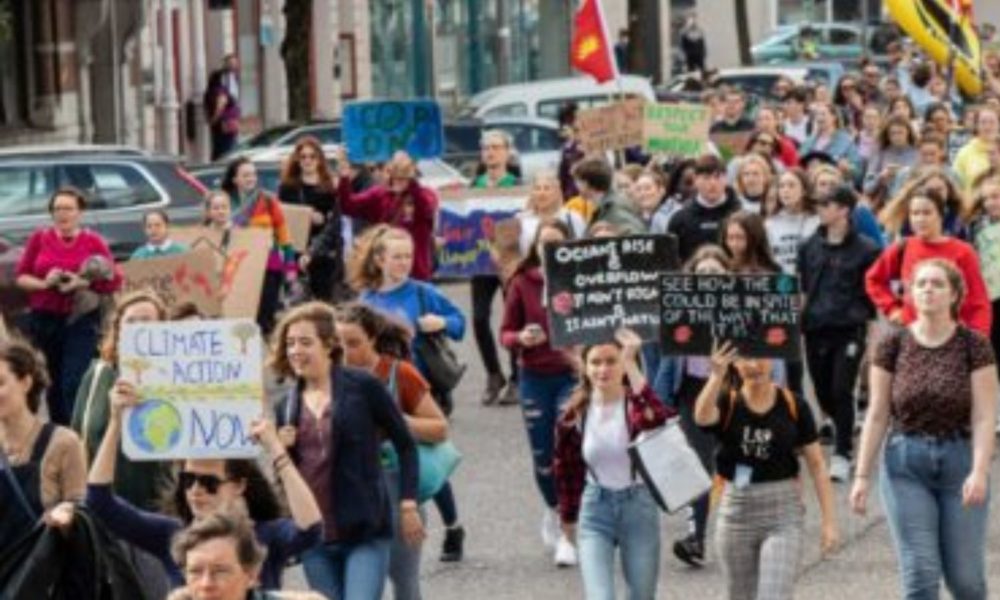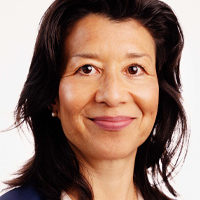I’m the President of the Union of Concerned Scientists, which is the honor of a lifetime! But I have to admit: my childhood dream was to be a doctor.
I fell in love with science early. My Chinese grandfather, an accomplished geologist, inspired me with his discoveries and lifelong sense of wonder. In high school, I was lucky to have had two amazing science teachers, both women, who lent me confidence as I pursued biology and chemistry as one of the only girls of color in my school. Their mentorship helped me land an internship at a prestigious gastroenterology lab at the Dana Farber Cancer Institute my senior year.
After graduating, I was fixed on studying medicine. But the first college I went to had only started admitting women, and I ran smack into the sexism of the science department. The advisors and professors who were meant to help support my academic choices discouraged me from pursuing pre-med. The experience was so dispiriting that I ended up changing majors and transferring to another school 3,000 miles away.
Clearly, I landed on my feet. And I’m grateful that my eventual degree in cultural anthropology gave me a broader appreciation for how humans forge meaning and kinship in the world. Perhaps if I hadn’t had that experience, I might not have been as drawn to work for social justice, which has been the unifying thread in my life and career. I feel very fortunate that the paths I’ve taken along the way have led me back to science.
But on this International Women’s Day 2022, with its theme of “Break the Bias,” I’m thinking about the remarkable energy that women and girls must expend to navigate a path of dignity and truth through forms of sexism that can be both blatant and insidiously subtle. For women and girls of color, these demands are more profound.
Sexism didn’t go away when I changed schools, or earned my degree, or began my career, or took on leadership roles at various organizations. As a biracial and Asian-American woman, I’ve also run up against the phenomenon known as the “dominance penalty,” which can leave me open to being viewed as incompetent if I don’t make decisions, and unlikeable if I do.
I do hope we’re moving into a future where girls and women can focus most of their prodigious intellect and energy on achieving the goals they set for themselves. And as I watch my extraordinary 26-year old daughter Anna and her friends–most of whom are pursuing STEM careers–my hope burns brightly. Certainly, in my leadership position at UCS, it’s my privilege and responsibility to do everything I can to help create the conditions for women to thrive.
How leaders can #BreaktheBias
At this point in my life and career, I certainly don’t have all the answers. Any journey toward truly equitable, just, and inclusive workplaces will be bumpy, messy, and full of mistakes. But I believe that public-serving leaders, regardless of their identities or the sectors or fields in which they work, can do two things to advance the sustainability and diversity of their workforces and workplaces.
One is to pay close attention to how power plays out inside organizational systems, policies, practices, and cultures. It’s not just about setting up an implicit bias training or creating an equity task force. It requires a more systemic approach than that, including bringing attention and clarity to how decision-making happens in organizations. Inclusive decision-making is not just the right thing to do, it’s the best way to tap the expertise that resides in staff at all levels, all of which helps us at UCS do better science, and reach more durable solutions. Attention to power also requires creating the conditions for people to feel safe sharing their thinking. And it requires being both humble and bold in how we exercise power and privilege in partnership with others.
The second is mentorship. The best leaders I’ve ever encountered are incredibly generous in cultivating existing and emerging leadership inside and outside their organizations. I emulate this by looking for “bright lights” who cross my path—listening to them, putting them in touch with others who can help and inspire them, and being available to help them think through their next move. I do this to ‘pay it forward’ for what my mentors gave me, but also because this next generation of leaders gives me the greatest hope for the future.
Standing on their shoulders
When I think about the women from across history and across the globe who persevered to make great strides in science, I’m in awe. I count Judy Cohen and Judith Masselam—my high school science teachers—among them, along with Dr. Chien-Shiung Wu, experimental physicist, Rachel Carson, conservationist and marine biologist, Katherine Johnson, physicist and mathematician, and Maryam Mirzakhani, mathematician. There are so many more incredible women, both ordinary and world-famous, who inspired my early love for STEM, and who still do.
We’re ever more conscious and vocal today about the toll that systemic racism and sexism extracts from us as individuals and society at large. In the words of paleontologist, evolutionary biologist, and science historian Stephen Jay Gould:
I am, somehow, less interested in the weight and convolutions of Einstein’s brain than in the near certainty that people of equal talent have lived and died in cotton fields and sweatshops.
Looking back, I have no regrets at not being a doctor. Serving the Union of Concerned Scientists to fight for climate justice, democracy, and nuclear security alongside incredible staff, board members, and partners is a gift beyond my wildest dreams. On this International Women’s Day, I’m reflecting on the toll and triumphs of my journey. We have more work to do to #breakthebias. On this day, I’m grateful to the pioneering women and allies who have come before me, and to the whole-hearted, brilliant, and vocal girls and young women like my daughter and her friends, who are shining the light ahead.

